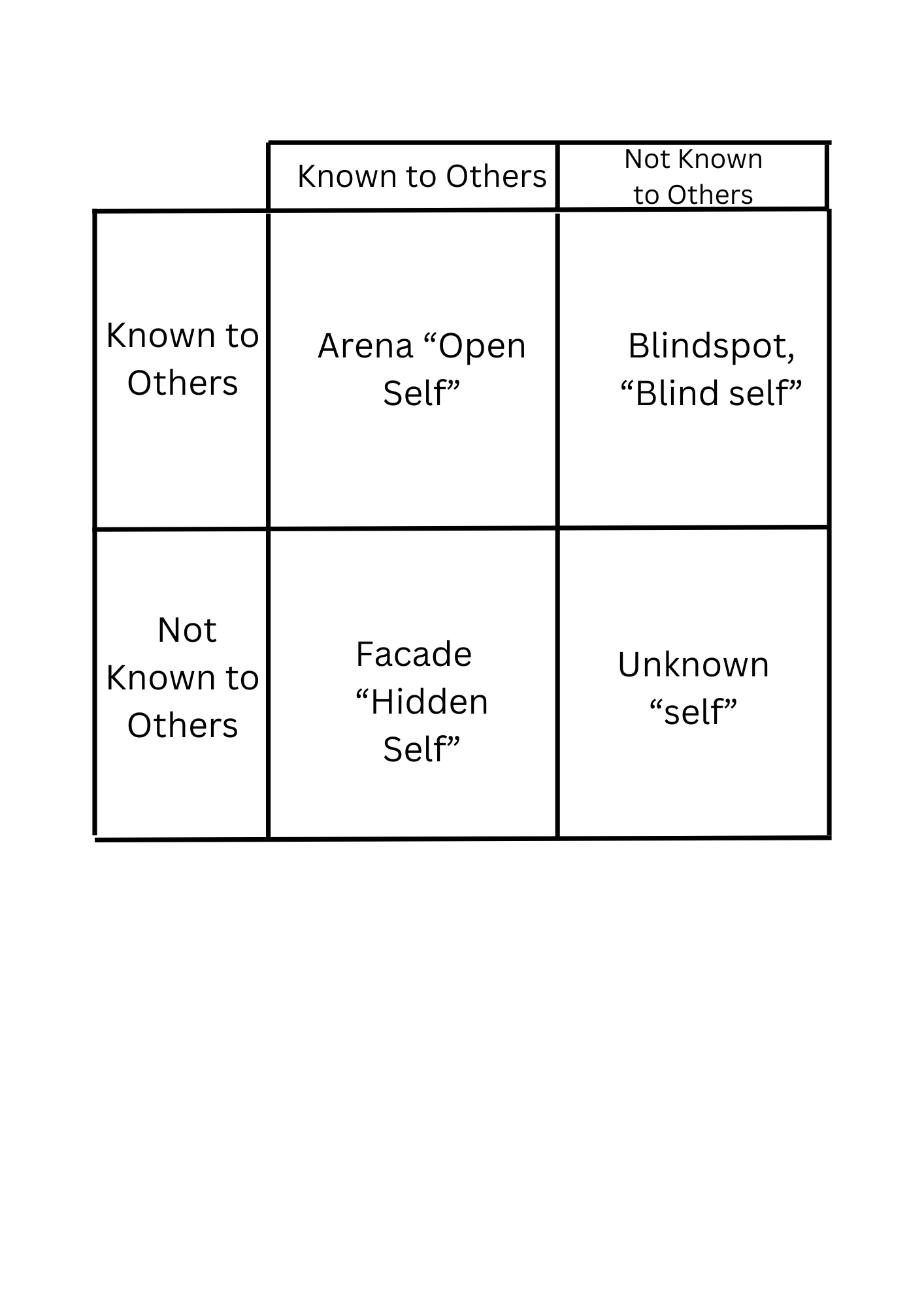The Johari Window is a psychological model that provides a framework for understanding and improving self-awareness and interpersonal communication. It was developed by psychologists Joseph Luft and Harrington Ingham in 1955. The model is named after the combination of their first names, Joe and Harry.
The Johari Window consists of four quadrants, each representing a different aspect of an individual’s self-awareness:
- Open Area (Arena): This quadrant represents the information about oneself that is known to both the individual and others. It includes behaviors, attitudes, feelings, and other aspects of the person’s personality that are transparent and open for observation.
- Blind Area (Blind Spot): In this quadrant, aspects of oneself that are not known to the individual but are apparent to others are included. These can be things like habits, behaviors, or traits that others observe but the individual is not aware of.
- Hidden Area (Facade): The hidden area contains information that the individual knows about themselves but keeps hidden from others. This can include personal feelings, fears, insecurities, or private thoughts that the person is not willing to share openly.
- Unknown Area: This quadrant represents aspects of the individual that are neither known to the person nor to others. It includes undiscovered potential, hidden talents, and aspects of the self that have not yet been revealed or recognized.
The goal of the Johari Window is to increase the size of the Open Area by reducing the Blind Area, Hidden Area, and discovering the Unknown Area. This process is typically facilitated through open and honest communication, feedback, and self-disclosure. As individuals engage in feedback and self-disclosure, they can build trust, enhance interpersonal relationships, and develop a better understanding of themselves and others.
The Johari Window is often used in various fields, including psychology, group dynamics, and self-help, as a tool for personal and professional development. It emphasizes the importance of mutual understanding and communication in building effective relationships.
